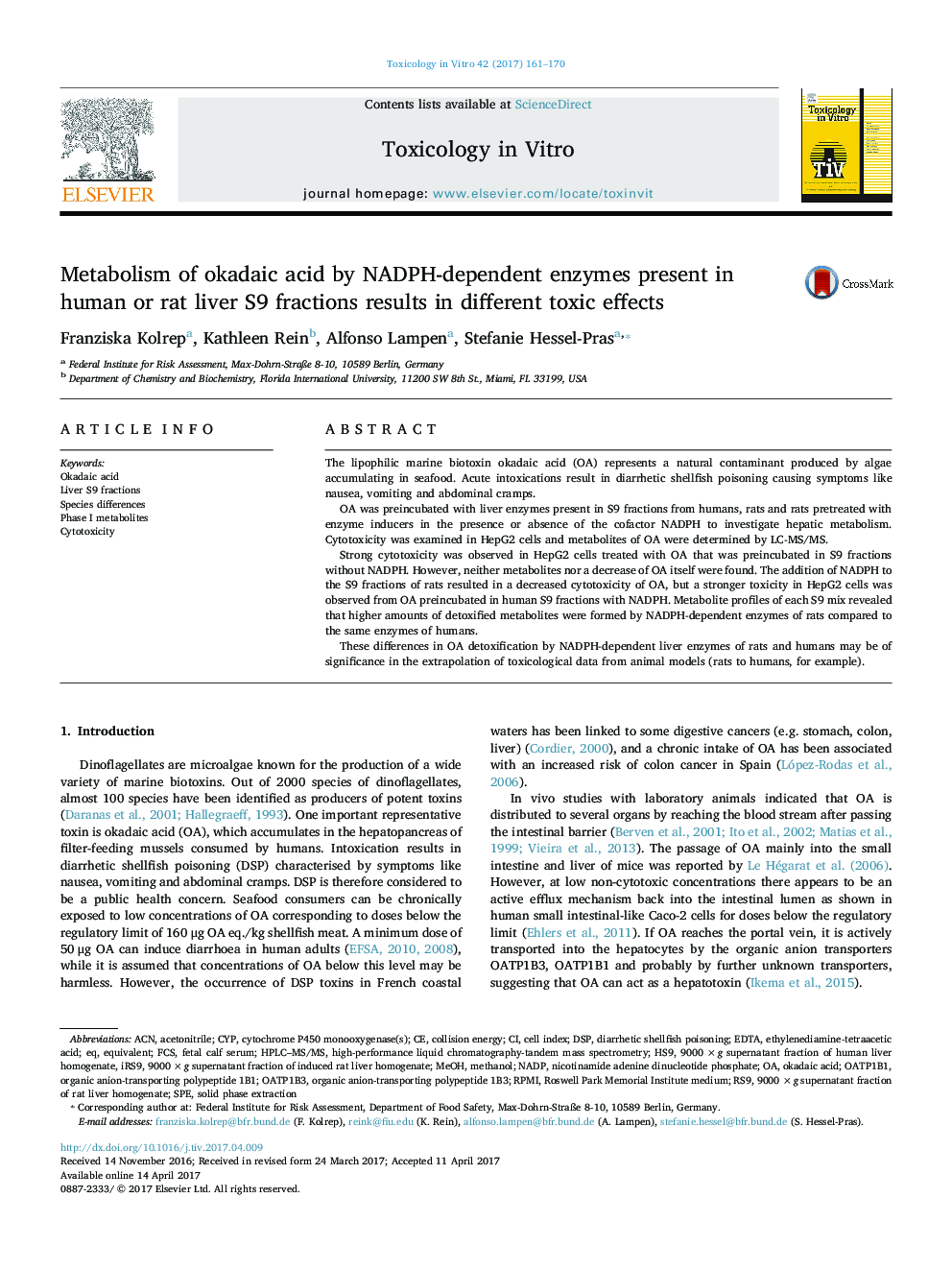| Article ID | Journal | Published Year | Pages | File Type |
|---|---|---|---|---|
| 5562638 | Toxicology in Vitro | 2017 | 10 Pages |
â¢Increase in cytotoxicity of OA in the presence of S9 fractions without cofactorâ¢Additional increase in cytotoxicity of OA in the presence of human complete S9 mixâ¢Decrease in cytotoxicity of OA in the presence of complete rat S9 mixâ¢Detection of oxidative metabolites after incubation of OA with complete S9 mixâ¢The more oxidative metabolites were produced, the less was the cytotoxicity of OA.
The lipophilic marine biotoxin okadaic acid (OA) represents a natural contaminant produced by algae accumulating in seafood. Acute intoxications result in diarrhetic shellfish poisoning causing symptoms like nausea, vomiting and abdominal cramps.OA was preincubated with liver enzymes present in S9 fractions from humans, rats and rats pretreated with enzyme inducers in the presence or absence of the cofactor NADPH to investigate hepatic metabolism. Cytotoxicity was examined in HepG2 cells and metabolites of OA were determined by LC-MS/MS.Strong cytotoxicity was observed in HepG2 cells treated with OA that was preincubated in S9 fractions without NADPH. However, neither metabolites nor a decrease of OA itself were found. The addition of NADPH to the S9 fractions of rats resulted in a decreased cytotoxicity of OA, but a stronger toxicity in HepG2 cells was observed from OA preincubated in human S9 fractions with NADPH. Metabolite profiles of each S9 mix revealed that higher amounts of detoxified metabolites were formed by NADPH-dependent enzymes of rats compared to the same enzymes of humans.These differences in OA detoxification by NADPH-dependent liver enzymes of rats and humans may be of significance in the extrapolation of toxicological data from animal models (rats to humans, for example).
